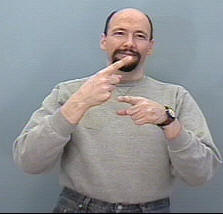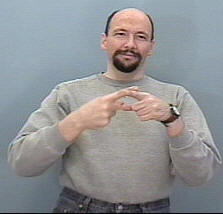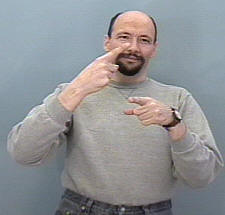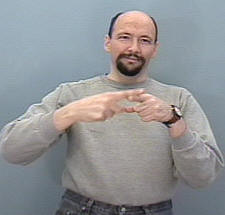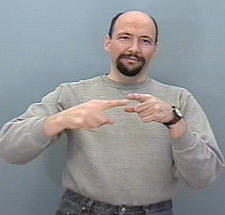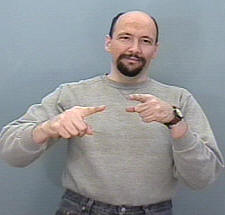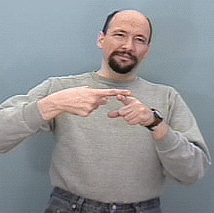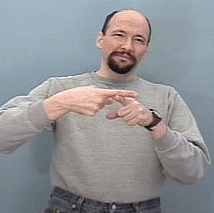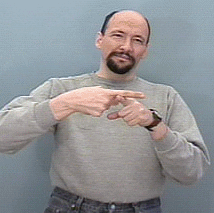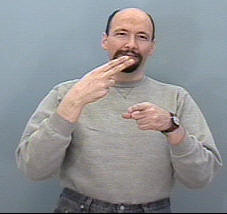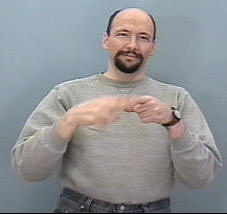American Sign Language: "knife"
In the sign for "KNIFE" the right index finger starts with the palm facing backward and moves down and contacts the second knuckle of the left index finger then makes a small backward slicing movement as it continues its downward path.
The above version of "knife" looks a lot like the sign for "CAN'T" but there are some important differences. In the sign for "can't" the right hand (if you are right handed) starts palm down, moves downward and whacks the tip of the left index finger very quickly. The left index finger bends as the right index finger past in its downward movement.
In this next version, the knife moves down, contacts the "carrot" and the slices forward along and off of the carrot. As if peeling a carrot.
KNIFE (version)
"Cut with a knife"
This sign looks like you are using your right index finger to saw your left index finger off.
Here is a version of knife that uses an "H" handshape on the dominant hand instead of just an index finger. This sign means "KNIFE" just the same as the other version, but I reckon if you were talking about different types of knives, you could use the "H" handshape to show a knife that is larger than a knife done with just the index finger.
Note: The other day a fellow I know criticized this "H"-hand version of the sign for "knife." He said it wasn't the "right" sign.
Uh huh. Gotcha. Thanks for sharing. I'm sure it is nice to be "right" all the time.
Moving along, I might suggest that all you eager readers out there try a little experiment. Go ask your Deaf friends to show you how they would sign the following sentence:
"Spread butter on a piece of bread with a knife."
Seriously, try it.
Chances are you are going to see the "knife" concept in that sentence represented with an "H" handshape rather often by your language models. (And the bread will be represented by a "flat hand.")
My point in sharing several versions of certain signs isn't to claim that any one sign is "right" but rather to emphasize that signing is situational and that to be a skilled signer a person needs to know and recognize variations of signs as well as how and when to use those variations.
You can learn American Sign Language (ASL) online at American Sign Language University ™
ASL resources by Lifeprint.com © Dr. William Vicars
Want to help support
ASL University? It's easy:
DONATE (Thanks!)
(You don't need a PayPal account. Just look for the credit card
logos and click continue.)
Another way to help is to buy something from the ASLU "Bookstore."
Want even more ASL resources? Visit the "ASL Training Center!" (Subscription
Extension of ASLU)
CHECK IT OUT >
Bandwidth slow? Check out "ASLUniversity.com" (a
free mirror of
Lifeprint.com less traffic, fast access)
VISIT >
